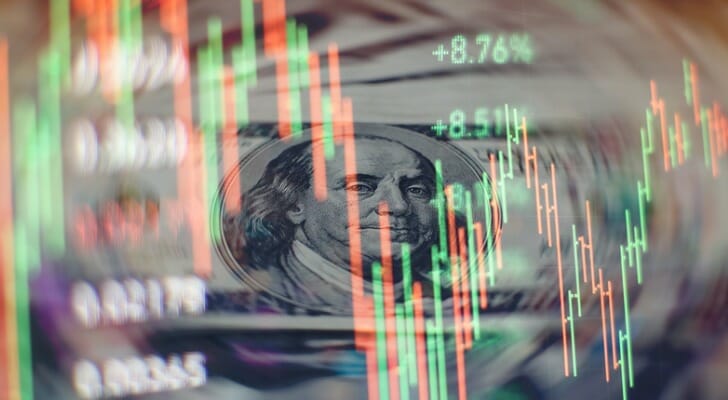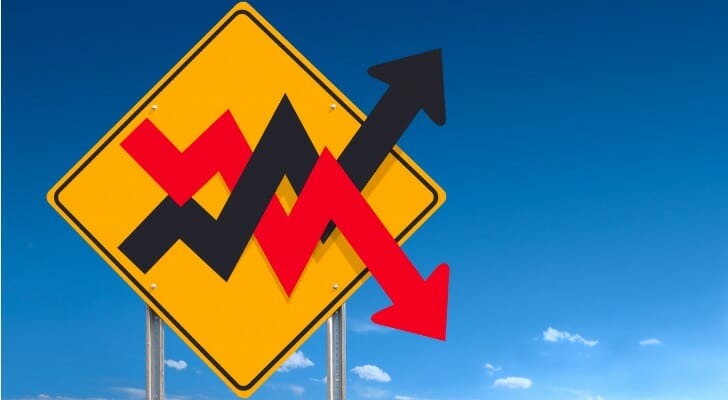The CBOE Volatility Index (VIX) gives investors a measure of how much the stock market is expected to fluctuate over the next 30 days. VIX is often called the “fear index,” because it can indicate the level of investor concern. A higher VIX indicates an expectation of larger price moves up or down. A lower VIX suggests less price volatility in the near future. Investors can use this forecast of expected market volatility to guide investment decisions. They can also invest in VIX-connected securities as a hedging strategy.
A financial advisor can help you hedge your investments so that you maximize your returns.
Interpreting the VIX
VIX was created in 1993 by CBOE Global Markets, a holding company that owns the Chicago Board Options Exchange. The index was significantly revised in 2003. VIX does not measure historical volatility or the entire market, but looks at the current prices of put and call options on the S&P 500 Index.
A VIX reading does not directly indicate whether the expected price changes will be up or down, but only the expected stability of the market (or lack thereof) and how large price changes are expected to be. It is also time-limited, looking at expected price changes only over the next 30 days.
A normal VIX reading indicating stock prices are likely to be stable going is typically below 20. Anything over 30 suggests prices might swing dramatically over the next month. Very high readings happen during extreme periods of volatility, often during major market sell-offs. The all-time high for the VIX was recorded March 16, 2020, when it exceeded 82 during a broad pandemic-induced market decline. The previous high was 80 in November 2008 during the Great Recession.
Using the VIX

The VIX is negatively correlated with the stock market. While the VIX reading does not specifically indicate whether future price changes will be up or down, a higher VIX is often connected with declining stock prices. This makes the VIX useful for forecasting future market trends, while VIX-connected securities provide ways to diversify and hedge portfolios against unfavorable trends.
When the VIX is high, it is often seen as a sign the market will rise and investors should buy stocks. A low VIX, on the other hand, may signal a market decline and suggest a defensive posture. When the VIX is low, investors may increase their cash position in order to be able to buy stocks more cheaply during the anticipated correction.
Investors can also hedge a portfolio against market declines by purchasing VIX futures. These are contracts obligating an investor to buy or sell a security at a preset price on a preset date. Investors can use VIX futures to manage risk as well as diversify their portfolios.
VIX Tracking Securities
One of the easiest ways to use the VIX is with an exchange-traded fund (ETF) that tracks the VIX. The value of shares in these funds rises or falls based on the VIX reading. While a VIX-tracking ETF is a convenient way to take market volatility into account, an investment in these ETFs don’t always do a good job of accurately following the movements of the index.
There are two major types of VIX-tracking ETFs. A standard one will generate higher returns when market volatility increases, producing a higher VIX. An inverse VIX ETF does the opposite, producing greater returns when the VIX declines. An investor who expects more volatility would likely choose a standard ETF, while one predicting a stable market would prefer an inverse ETF.
VIX-tracking ETFs are technically exchange-traded notes (ETNs). Regular ETFs contain assets in the form of shares of stock, but VIX ETFs are actually unsecured debt obligations, or notes. In practice, however, investing in an ETN or an ETF is not very different from the point of view of the investor.
Bottom Line

The Volatility Index (VIX), also known as the “fear index,” measures market expectation of near-term volatility conveyed by stock index option prices. It’s a measure of investors’ view of the likelihood of future changes in the price of stocks. By tracking changes in the prices of options on the S&P 500 Index, VIX provides insight into the market’s view of how turbulent share prices will be over approximately the next 30 days. Investors can use the VIX reading to predict downturns and guide buying or selling decisions. They can also trade VIX futures contracts or buy shares in ETFs that track the VIX as a way to diversify and hedge portfolios.
Tips on Investing
- Using the VIX to guide buying and selling decisions, hedge a portfolio or diversify assets is a tool of sophisticated investors. Most investors should only trade VIX futures and ETFs with the assistance of a qualified and experienced financial advisor. Finding one doesn’t have to be hard. SmartAsset’s free tool matches you with financial advisors in your area in five minutes. If you’re ready to be matched with local advisors who will help you achieve your financial goals, get started now.
- Making investment decisions by tracking and interpreting changes in the VIX isn’t for everyone, especially if you’re a buy-and-hold investor interested primarily in simply getting asset allocation correct. That’s where a free calculator can be a real time saver.
Photo credit: ©iStock.com/ryasick, ©iStock.com/Maximusnd, ©iStock.com/mattabbe
